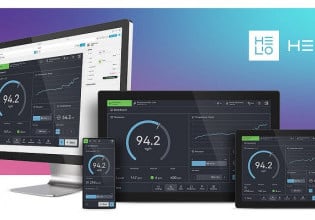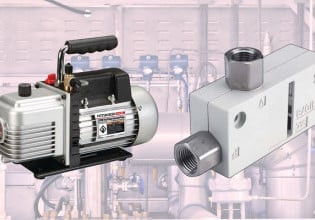Precise Angles in Press Brake Operations: Wenglor’s New Angle Sensor
Sheet metal bending is a common manufacturing process, effective for thin metal parts. The new MLSL1xxS50 from Wenglor ensures accurate bends in sheet metal for many different applications.
Sheet metal bending is the process of taking a single thin sheet of metal and forming it into a different shape. The process is important to many different industries, including shipping, automotive, construction, aerospace, and many others. Any process that requires metal with a lip, indent, flange, or joggle is quite likely to use sheet metal bending production processes.
Bending can be a more cost-effective process for part creation than machining, which can be slow and expensive in comparison, creating a lot of metal waste. This process of bending also gives manufacturers access to the creation of parts that are virtually impossible or cost-prohibitive using casting processes, often using very thin, relatively delicate sheets. Sometimes the process can be used to increase the stiffness of a part with the formation of creases or indents in an otherwise smooth sheet metal surface.
In order to form accurate parts, however, sensors are often needed to relay information to the control unit for precise part formation, particularly when the bend must meet an exact angle–down to fractions of degrees.
Wenglor’s New MLSL1xxS50 for Accurate Angle Measurement
Wenglor has recently developed a new sensor for use in inline sheet metal bending applications. The sensor is designed to help manufacturers create accurate inline bend angles for forming corners or any other part that requires the need for an inline bend angle. The sensor is called the MLSL1xxS50 and uses precision laser triangulation to give users accurate results for bending applications.

The MLSL1xxS50 uses laser triangulation to accurately measure the bend angle of sheet metal parts. Image used courtesy of Wenglor
This new angle sensor has the capability of measuring with both high precision and precise triggering time to ensure accurate and consistent press results. These sensors can be mounted directly to the press brake and accurately detect all types of surfaces, giving them the ability to provide accurate information to control systems when needed. The MLSL1xxS50 was designed to be plug-and-play and can be easily integrated into the software of most standard control system manufacturers. An easy-to-use interface is available that enables the sensors to be used seamlessly with sensors developed by other manufacturers.
Features of the MLSL1xxS50
The MLSL1xxS50 is able to measure the part directly, giving it the ability to be used in many different combinations for upper tools. The sensor can also be used for continuous part monitoring during the bending process, or providing a single reading in response to a trigger at the end of the final bend operation.
Sensors may be directly integrated into the control system, giving the controller the ability to adjust to varying parameters within the system. For example, the MLSL1xxS50 is able to provide accurate results even when the machine changes part production. This is possible because control unit communication can be used to give the sensor automatic adjustments to preset parameters based on the current part production.

Sheet metal bending can produce intricate parts, but the process is useless without strict measurement capabilities to verify the bends. Image used courtesy of Adobe Stock
Ethernet can connect different sensors, allowing them to communicate in real time, harmonizing the results of multiple devices when they are installed in parallel to work together during part development. The sensors are capable of measuring the part along its length to ensure accurate part production. The use of multiple sensors will help to make this process faster, especially in the case of longer parts.
Measuring Angles With Speed and Precision
Wenglor has developed the MLSL1xxS50 to give manufacturers the ability to accurately and quickly bend sheet metal parts. The sensors are compact, lightweight, and robust with a large measuring range helping manufacturers produce accurate parts over a large size range. Surface finish is not a problem since the sensors can accurately sense many different surface finishes. The sensors can be easily integrated into many common manufacturing control systems with the ease of plug-and-play connectivity.






